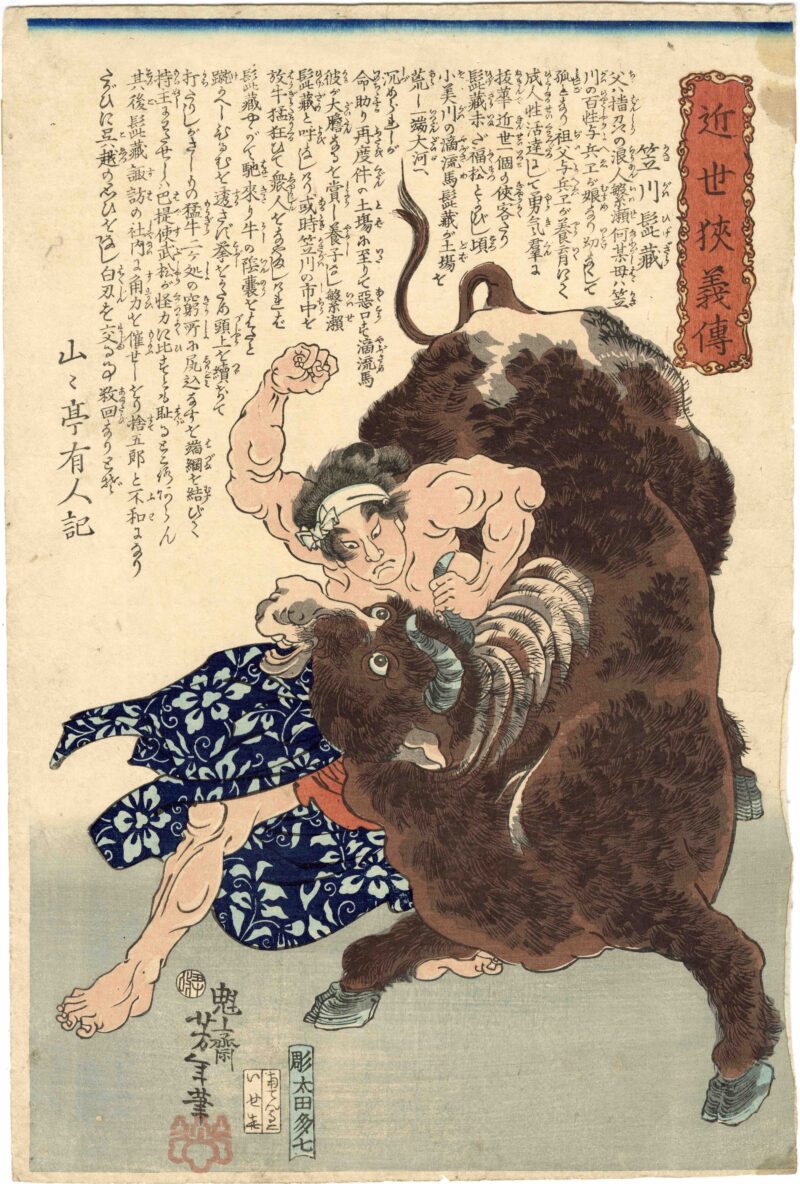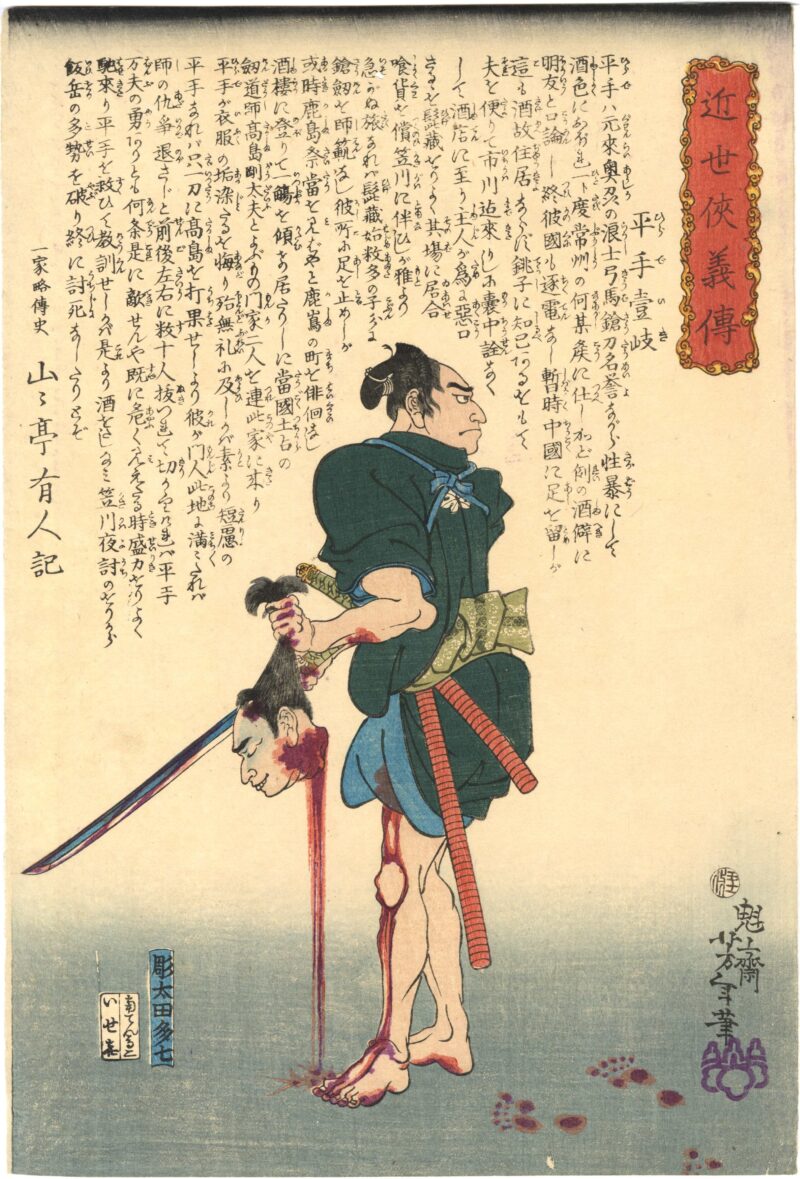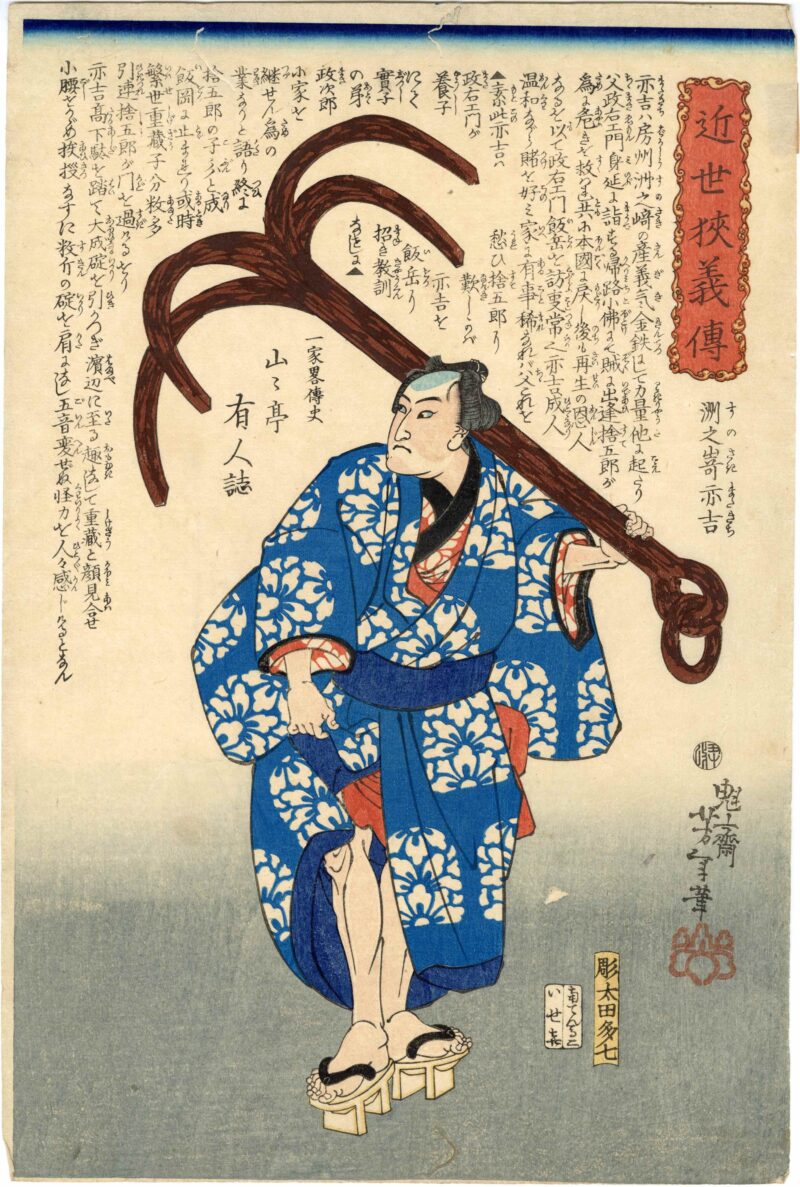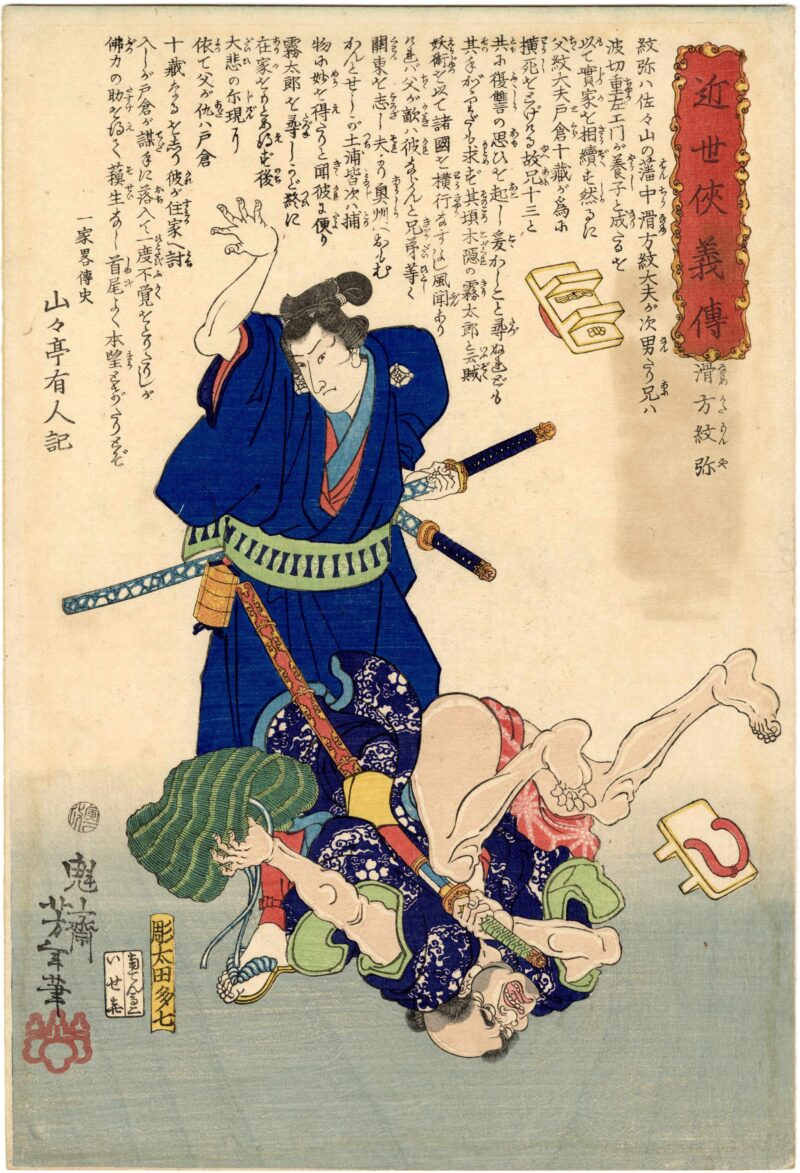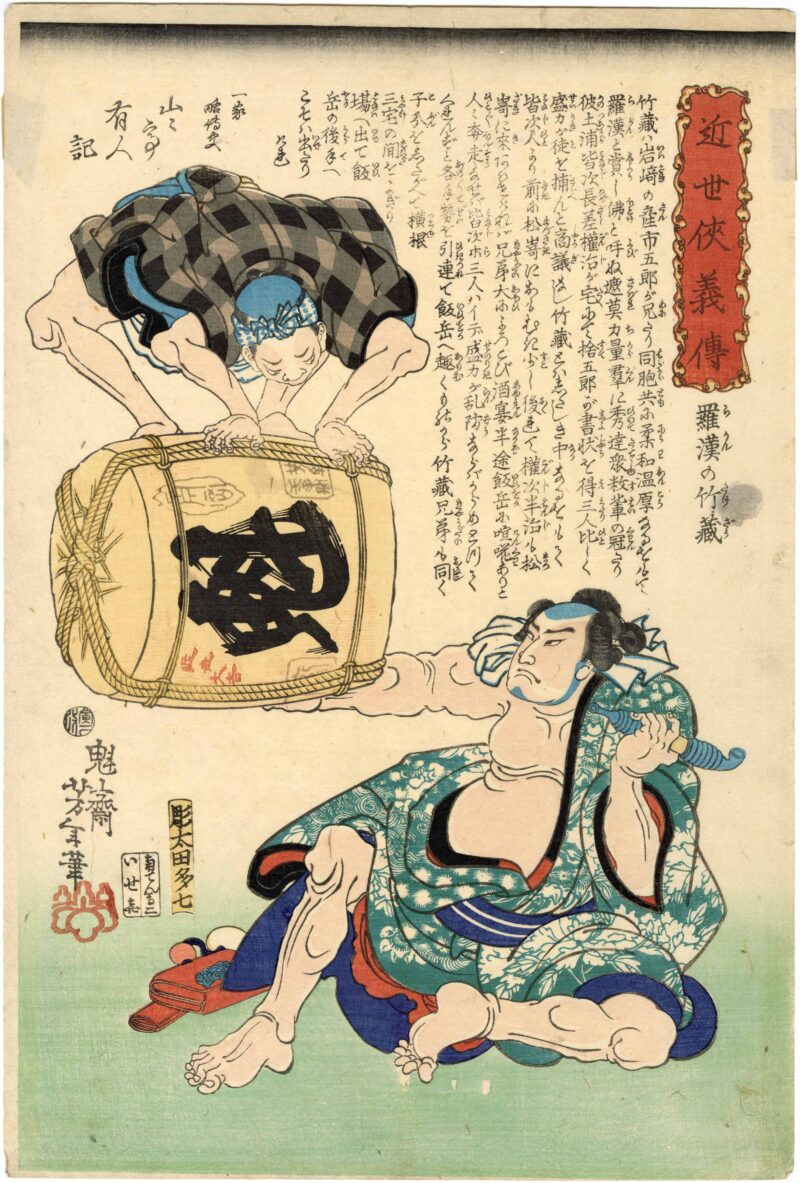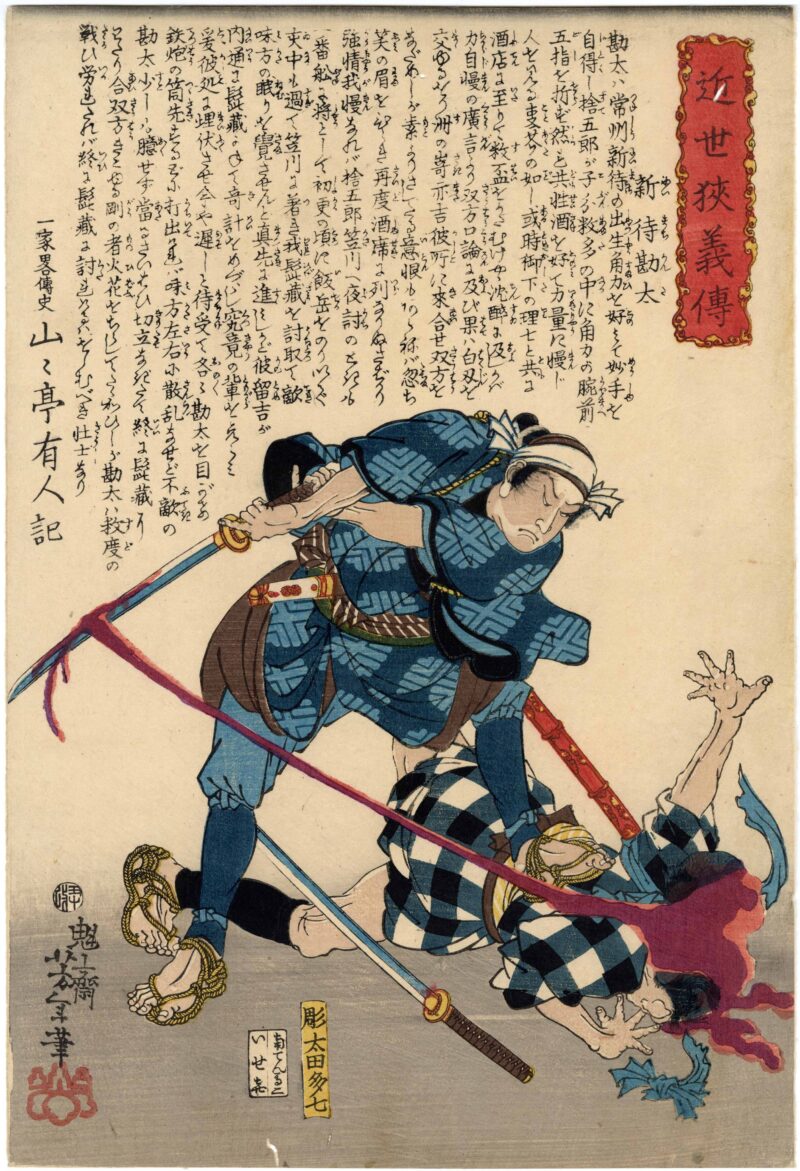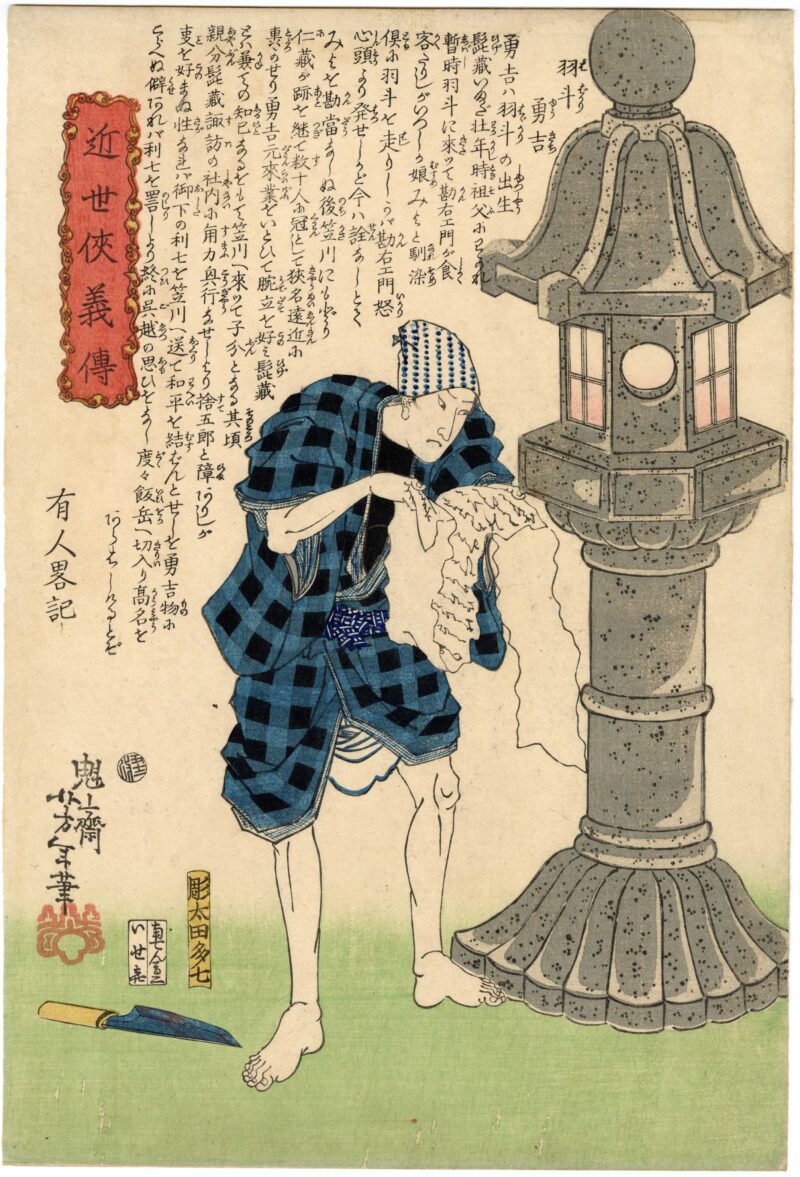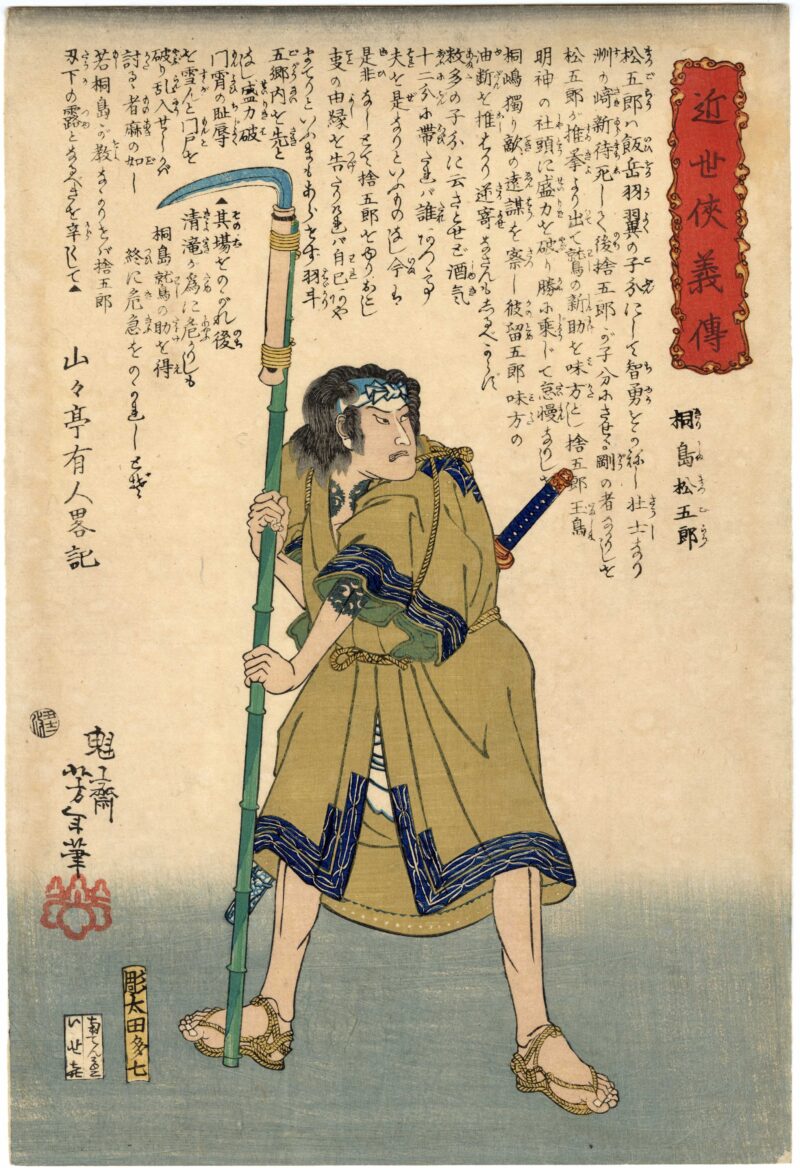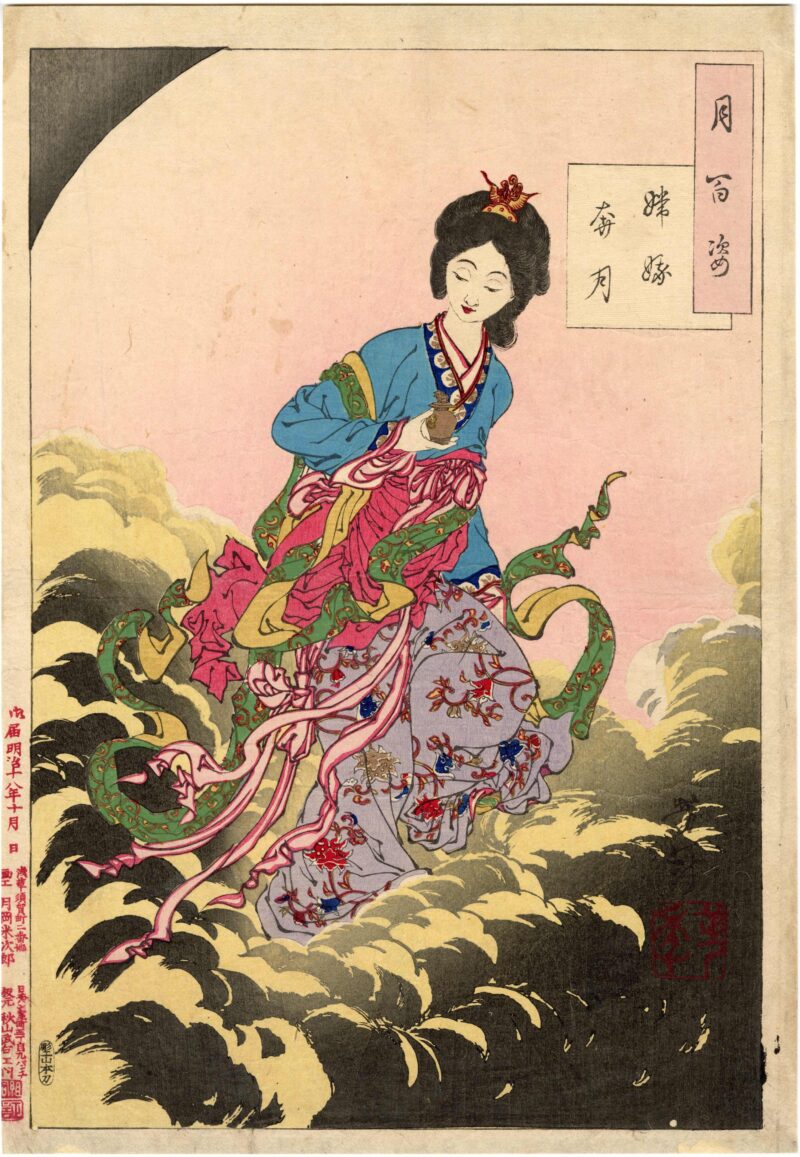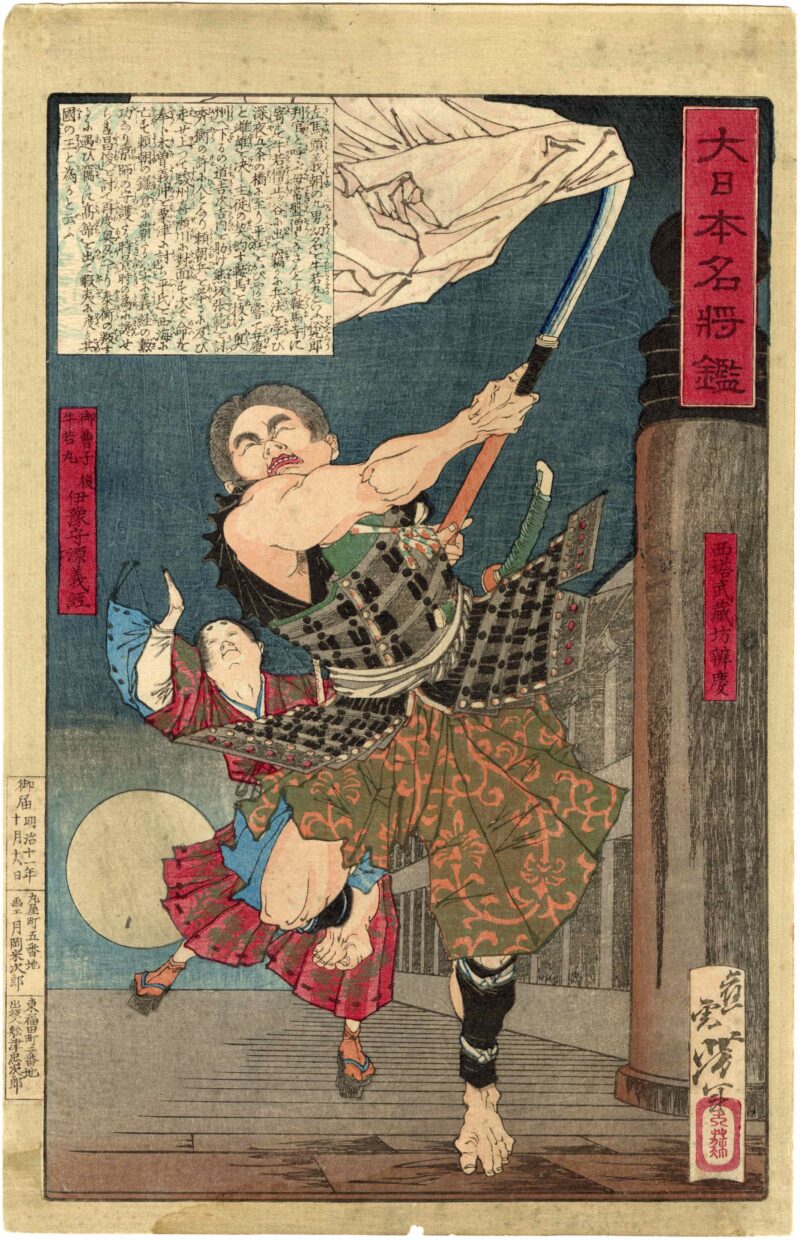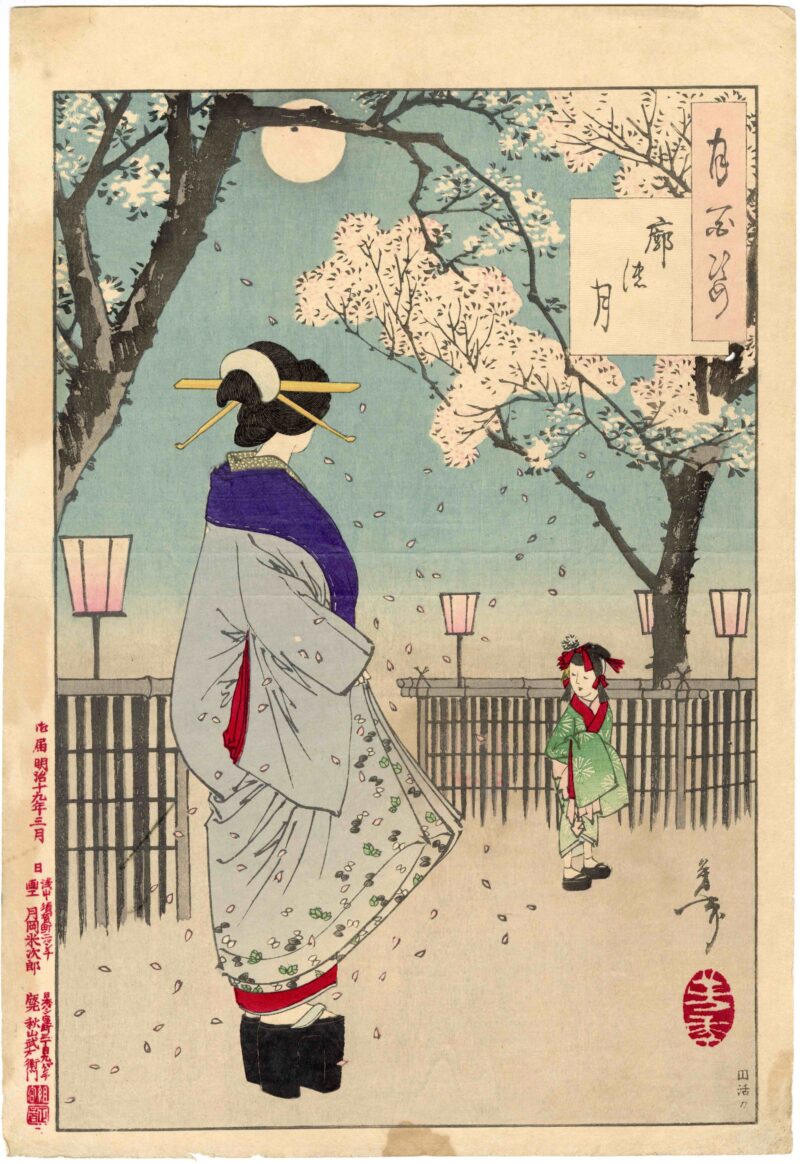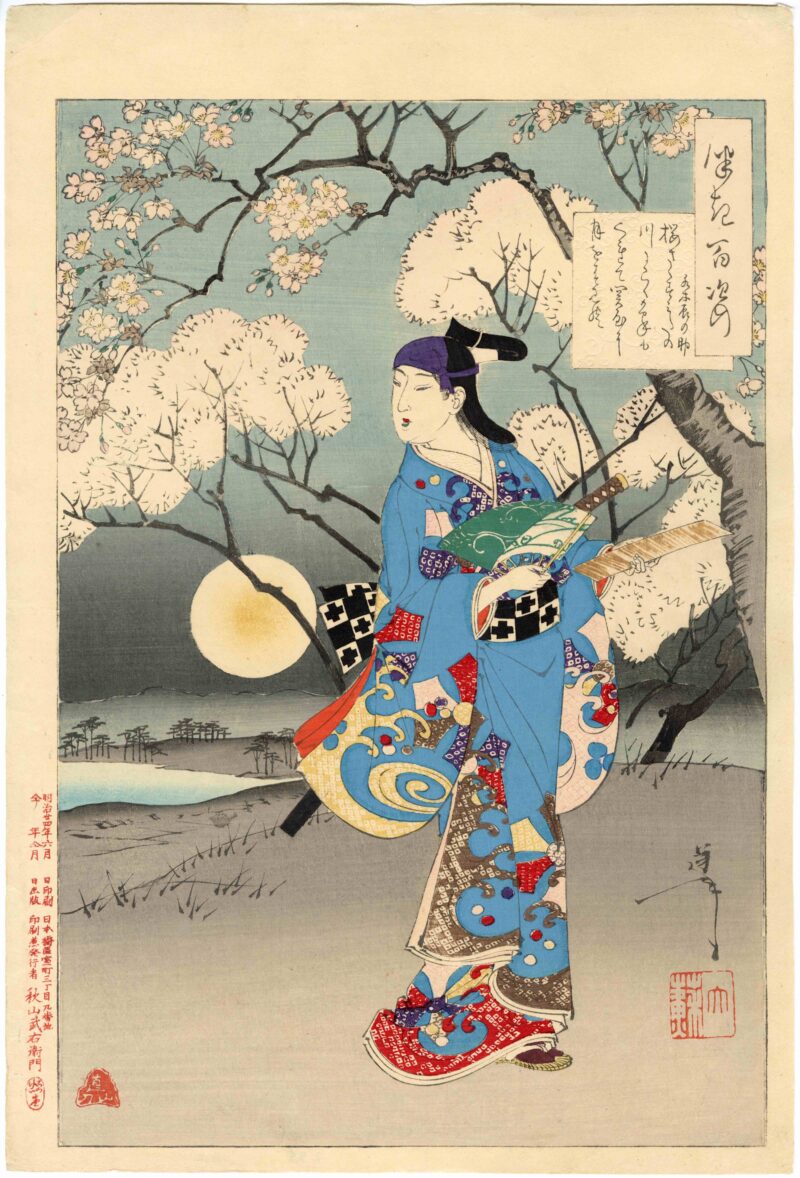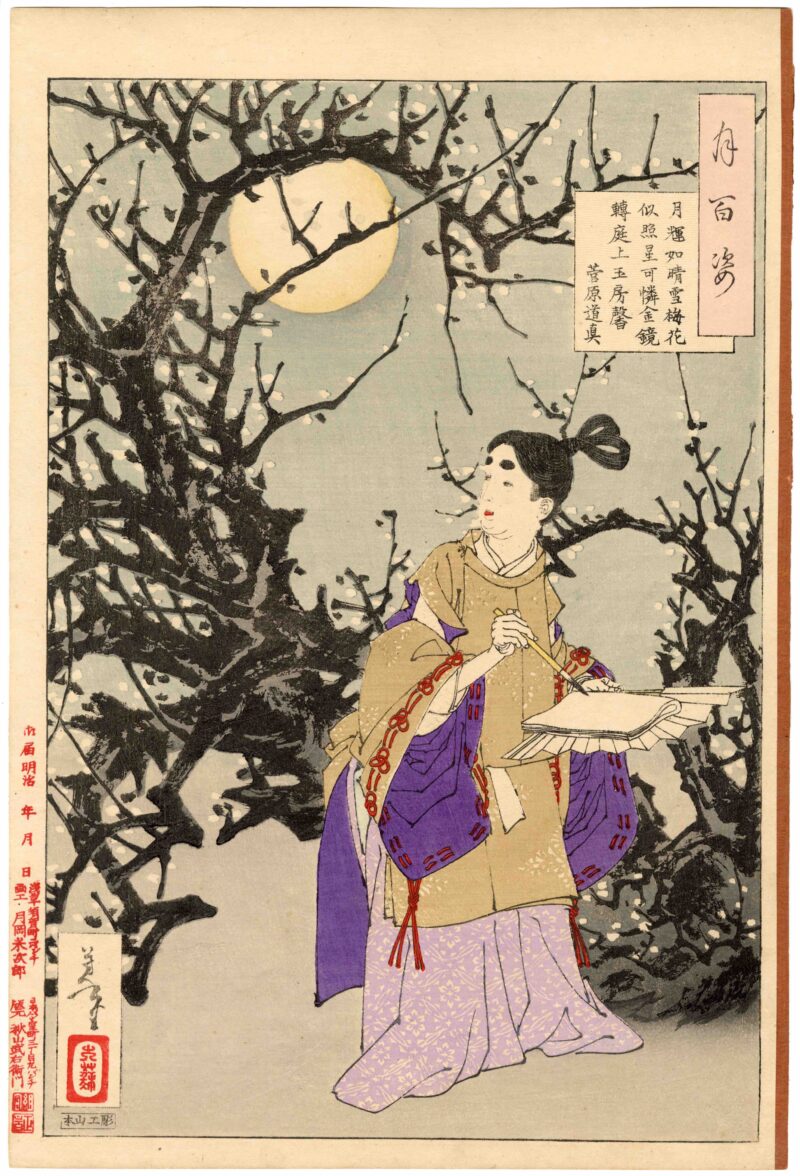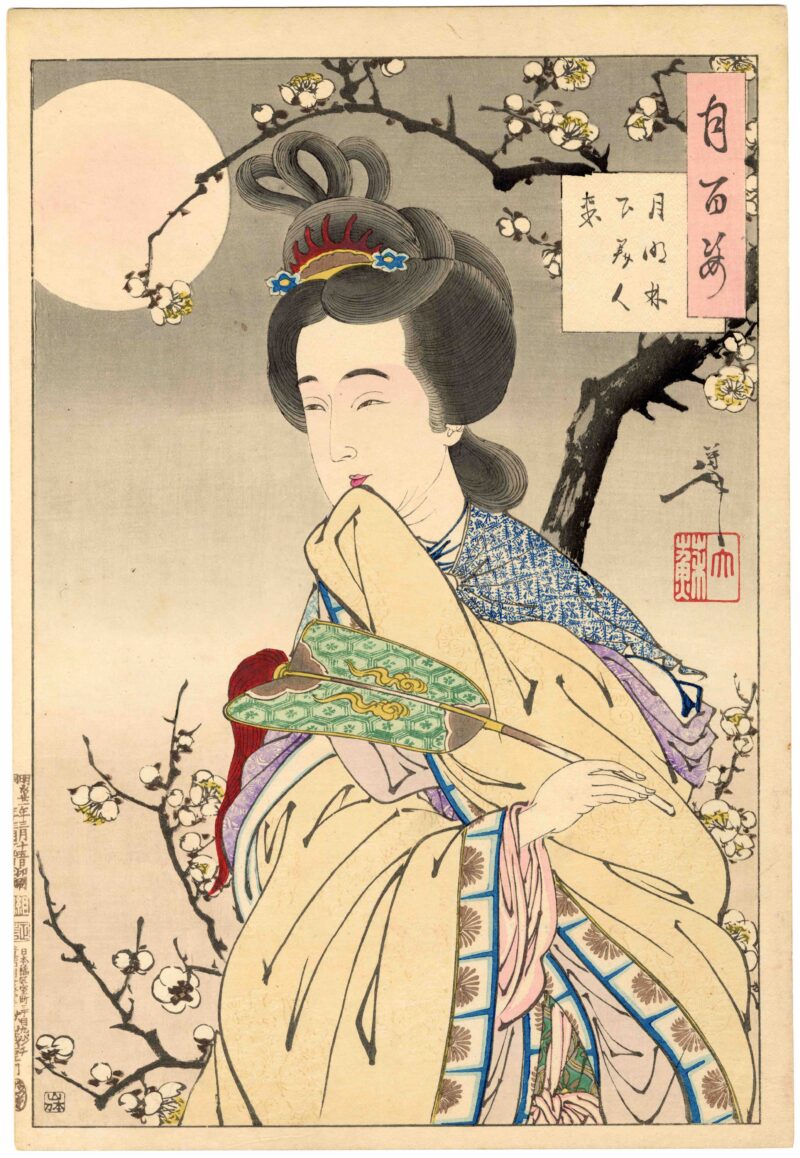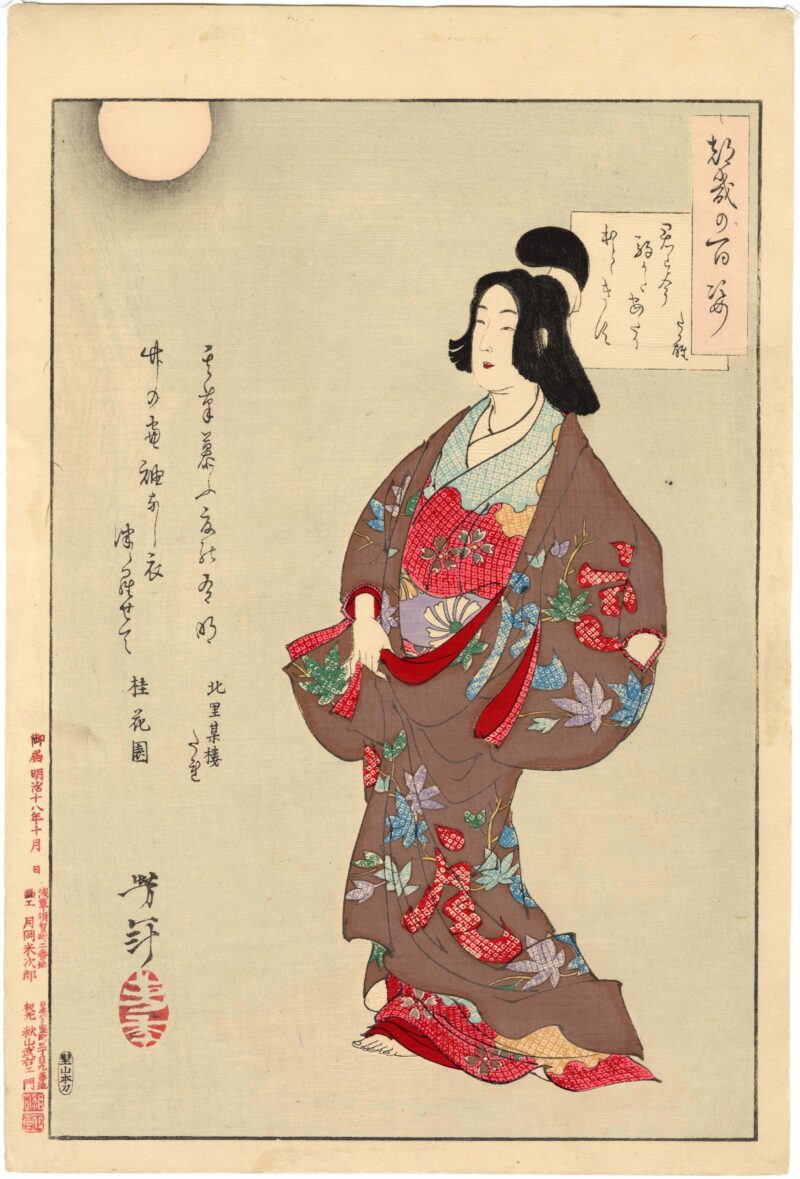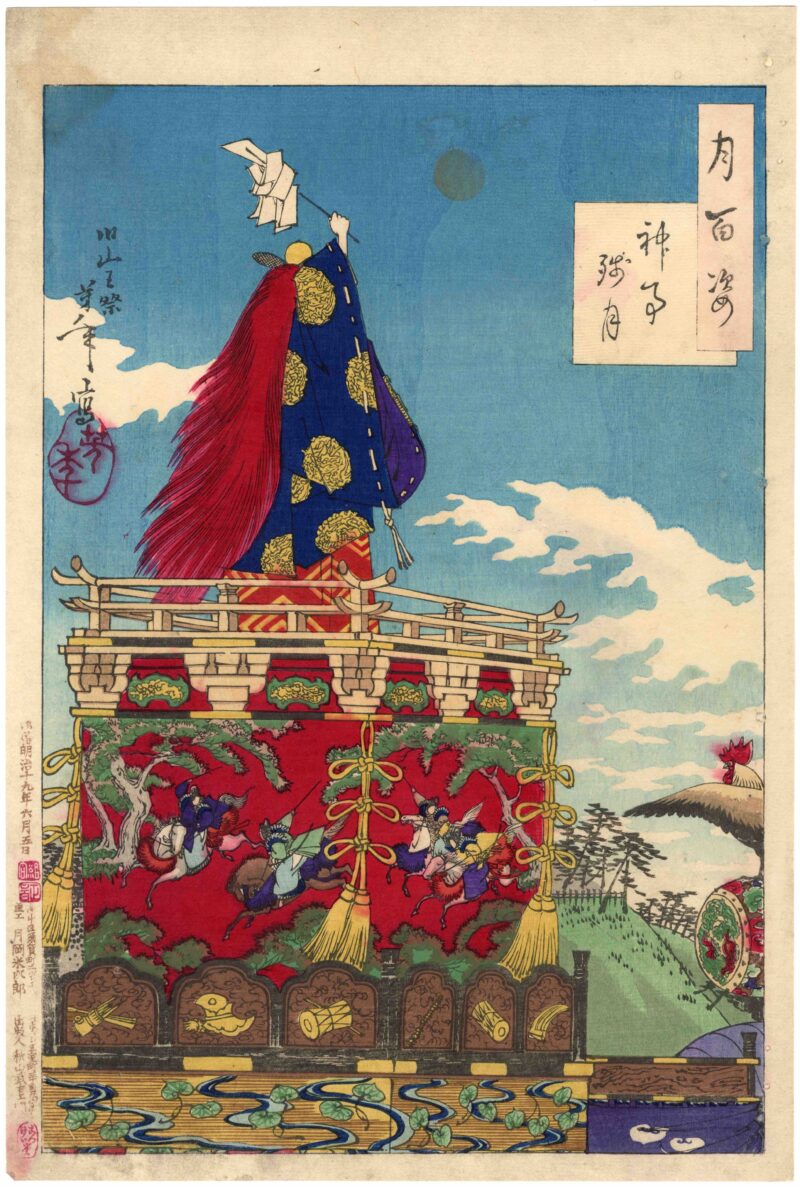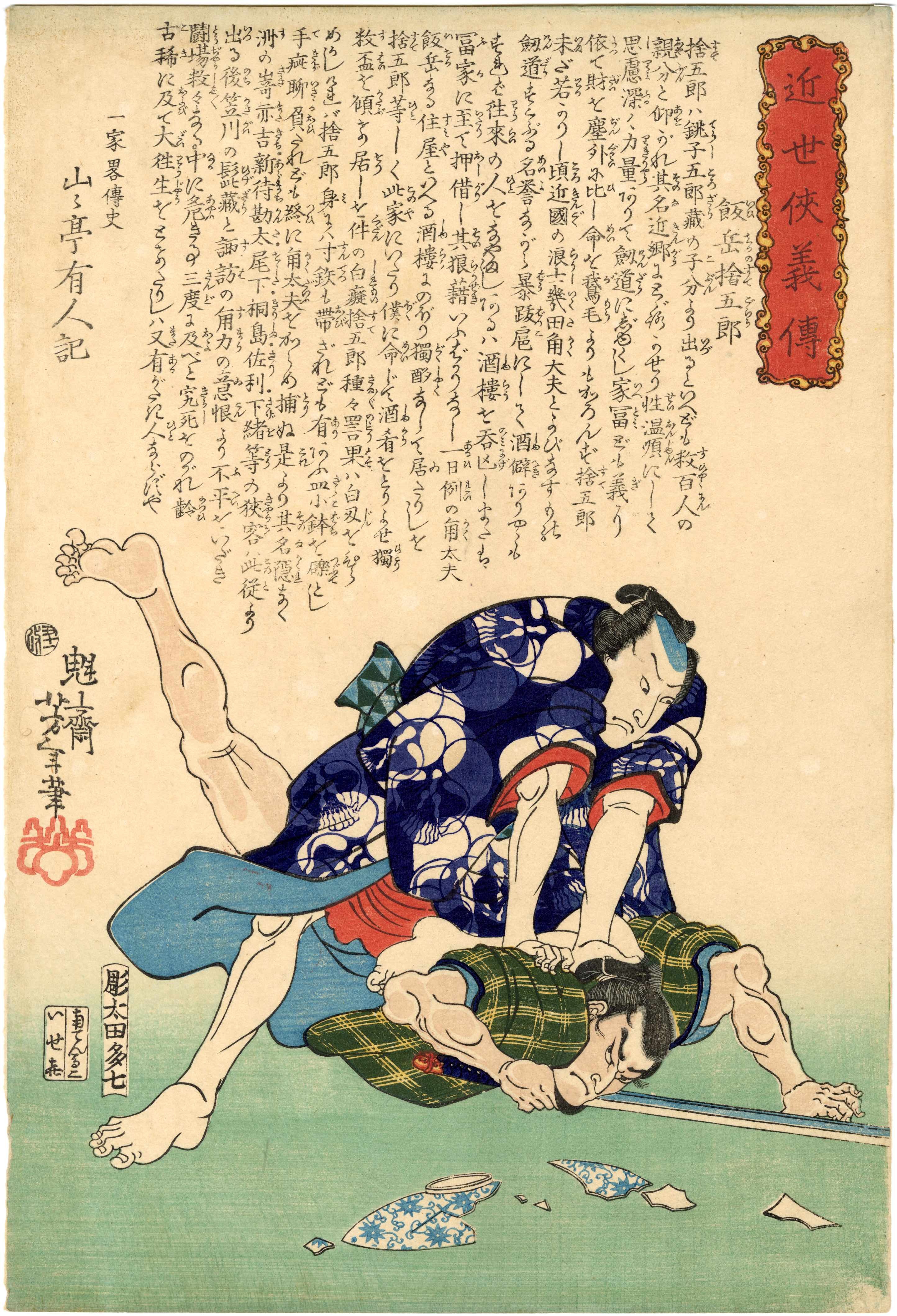- Collection
- Collection database
- Iioka no Sutegorō
Iioka no Sutegorō
Stories of Modern Chivalrous Men
Information
| Title | Iioka no Sutegorō Iioka no Sutegorō 飯岳捨五郎 |
| Series title | Stories of Modern Chivalrous Men 近世侠義傳 |
| Artist | Tsukioka Yoshitoshi 月岡芳年 (1839–1892) |
| Date | 11/1865 |
| Publisher | Iseya Kisaburō (Man’yōdō) 伊勢屋喜三郎 (万葉堂) |
| Woodcarver | Ōta Tashichi 太田多七 |
| City | Edo |
| Signature | Kaisai Yoshitoshi hitsu 魁齋芳年筆 |
| Artist seal | paulownia |
| Censorship seal(s) | aratame, Ox 11 改丑十一 |
| Publisher’s seal(s) | Nantenma 2 Ise-Ki 南てん馬二いせ喜 |
| Blockcutter’s (and/or) printer’s) seal(s) | hori Ōta Tashichi 彫太田多七 |
| Inscription | 捨五郎は銚子五郎藏の子分より出るといへども数百人の親分と仰がれ。其名近郷にとゞろかせり。性温順にして思慮深く力量ありて劒道にじゆくし家富ども義に依て財を塵外に比し命を鵞毛よりもかろんず。捨五郎未だ若かりし頃近國の浪士幾田角大夫とよびなすもの劔道すこぶる名誉ながら暴跋扈にして酒僻「酒癖」ありやゝもすれば往来の人をなやましあるハ酒樓を呑逃し。または富家に至て押借し其狼籍いふばかりなし一日例の角太夫飯岳なる。住屋といへる酒樓にのぼり獨酌なして居たりしを拾五郎等しく此家にいたり。僕に命じて酒肴をとりよせ獨数盃を傾き居しを件の白癡捨五郎種々詈果ハ白刃をひらめかしけれバ、捨五郎身にハ寸鉄も帯ざれども有あふ皿小鉢を礫とし手疵聊負たれども終に角太夫をからめ捕ぬ。是より其名隠なく洲の寄亦吉・新待勘太・尾下・桐島・佐利・下緒等の狭客ハ此従より出る。後笠川の髭藏と諏訪の角力の意恨より不平をいだき闘場敉々なる中に危き事。三度に及べと究死をのがれ齢古稀に及て大往生をとあたりしハ又有がたき人ならずや |
Description
Stories of Modern Chivalrous Men is a series of 36 designs Yoshitoshi made early on in his career. The set revolves around two rival gambling gangs that clashed in a bloody turf war during the 1840s, in around the area of the Tone River bedding in present-day northeastern Chiba Prefecture. The two gangleaders (oyabun) were Iioka no Sukegorō (1792–1859) and Sasagawa no Shigezō (1810–1847), their names derived from their turfs around Iioka Beach and the Sasa Riverbed. In the texts written by light novel author Sansantei Arindō (real name Jōno Saigiku, 1832–1902) the two rivals were renamed Sutegorō and Higezō to avoid censorship. Their feud continued for a couple of years until Sukegorō had Shigezō assassinated in 1847, in such an underhanded way that even some of his underlings (kobun) disliked it. A few of Shigezō's henchmen, including his successor Seiriki no Tomigorō, wanted to retaliate and attacked Sukegorō but failed, and Tomigorō committed suicide when he was surrounded by Sukegorō's men. The conflict seems to have stopped afterwards. The turf war was on such a large scale that it caught the attention of the Edo populace and reminded them of the large-scale samurai battles of old. It was soon heralded by professional storyteller (kōdanshi) Takarai Kinryō I as the "Suikoden of the Tenpō Era", referring to the extremely popular novel Suikoden (Water Margin) about 108 heroic bandits who defied the corrupt authorities. The Japanese of the Edo period loved rough strongmen with a disregard for authority, and later a kabuki play based on these events was performed in Edo, turning the gambling kingpins and their followers into exaggeratedly strong, rough, yet noble characters. Yoshitoshi followed suit, and depicts them displaying superhuman feats of strength, with the texts emphasizing their chivalry and kind-heartedness.
The text explains how, as a young man, Sukegorō made a name for himself by stopping Ikeda Kaku, a notorious rōnin, from terrorizing a small town during a drunken rampage. The image shows how he subdues an armed Kaku, a renowned swordsman, using his bare hands. The text also highlights his personal traits: level-headed, reserved, and calculated, Sukegorō values wealth and power above all and has little regard for human life (“has more disdain for human life than for a goose’s feather” inochi o gamō yori mo karonzu 命を鵞毛よりもかろんず). It also lists his most important followers: Sunosaki Matakichi 洲の崎亦吉, Niimachi Kanta 新待勘太, Oshita (Oshita no Rishichi) 尾下 ([sic] 小下), Kirishima (Kirishima Matsugorō) 桐島, and Sageo (Sageo no Isuke) 下緒. Lastly, it briefly describes the conflict between Sukegorō and his rival Sasagawa no Higezō (Shigezō), and ends with saying that he scaped death three times and died peacefully from old age.


